Team members: Marco Scodeggio, Dario Bottini, Mari Polletta, Paolo Franzetti, Marco Fumana, Adriana Gargiulo, Letizia Cassarà, Giustina Vietri, Susanna Bisogni, Chiara Mancini, Georg Herzog (Former members: Bianca Garilli, Lucio Chiappetti, Dario Maccagni)
Understanding galaxy formation and evolution requires determining galaxy properties across their lifetime. The history of a galaxy can be deciphered through the analysis of its emission across the multi-wavalength spectrum. Galaxy spectra, in particular, carry information on the different components making up a galaxy: stars, gas and dust. To obtain statistically robust results, and to control the intrinsic variations in the galaxy physical properties, it is necessary to have large samples of galaxies that cover wide areas and span different ages of the Universe. Our research is based on statistical studies of large samples of galaxies drawn from spectroscopic surveys and is aimed at understanding the mechanisms that drive galaxy evolution across cosmic times.
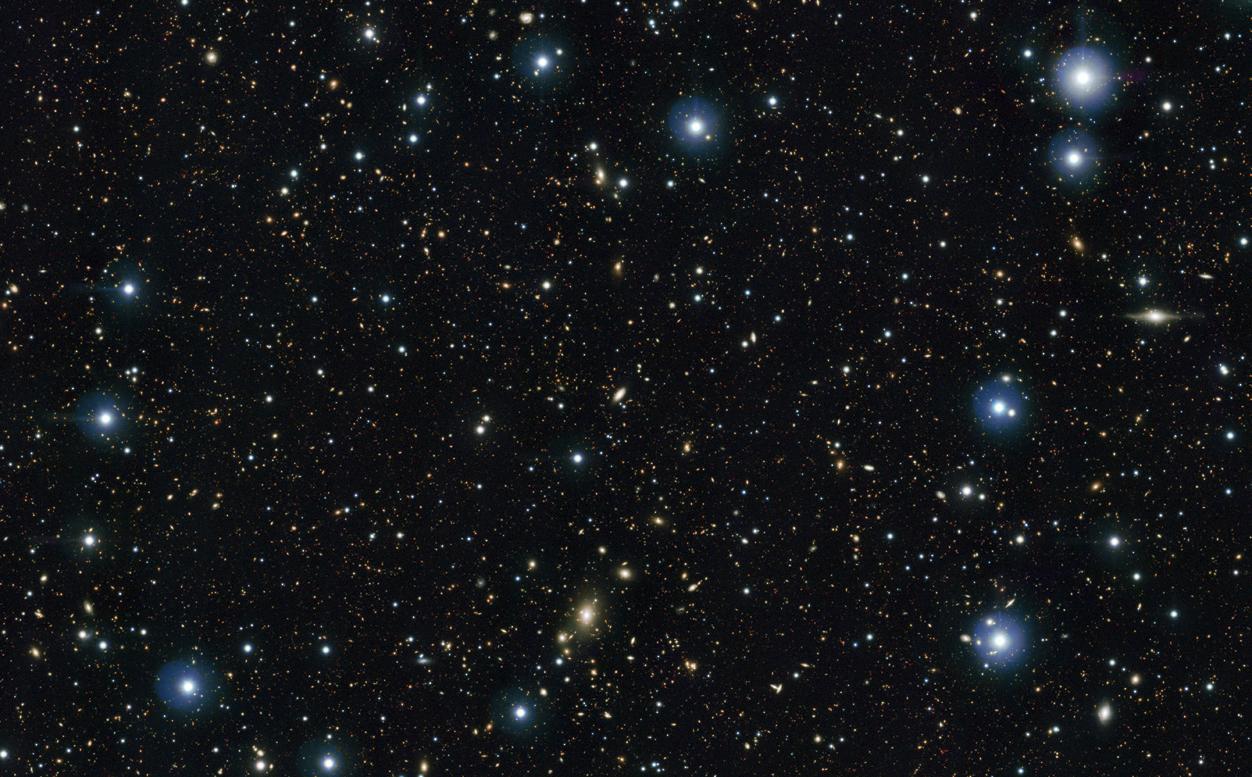
Large Spectroscopic Surveys
The large spectroscopic surveys in which our team is involved are listed below. The covered area, the density and number of spectra of some of these surveys are shown in the figures below.
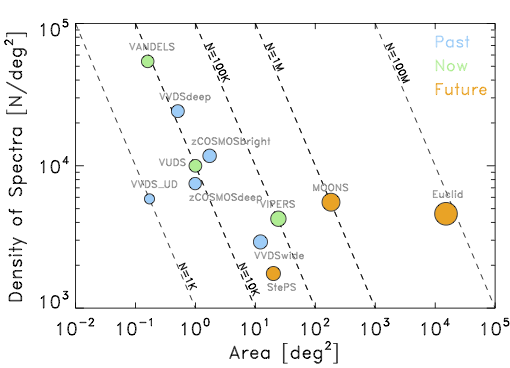
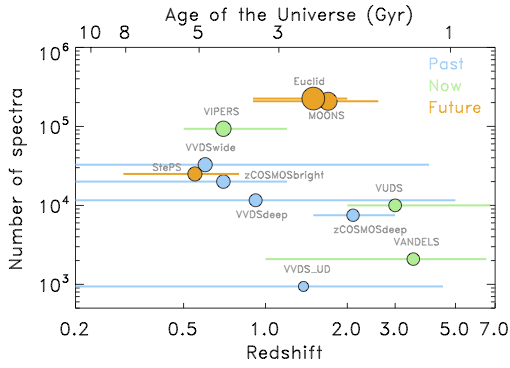
In addition to the large spectroscopic surveys mentioned above, we have been also involved in other surveys based on a variety of data: COSMOS, Dustpedia, MASSIV, SWIRE, XXL.
The key processes that drive galaxy evolution
By modelling optical and near-infrared spectra with deep photometric data, a galaxy star formation history, dust extinction, metallicity, stellar mass and age can be measured. We are carrying out this kind of analysis on samples of star-forming galaxies (left panel), weakly star-forming massive galaxies (middle panel), and massive passive galaxies (right panel) at various epochs. Our goals are studying the key processes that drive galaxy formation, assembly and evolution across cosmic times, and constraining the quenching timescales and mechanisms (AGN feedback, disk instability, major mergers). Images credit: Rainbow Cosmological Surveys Database and 3D-HST
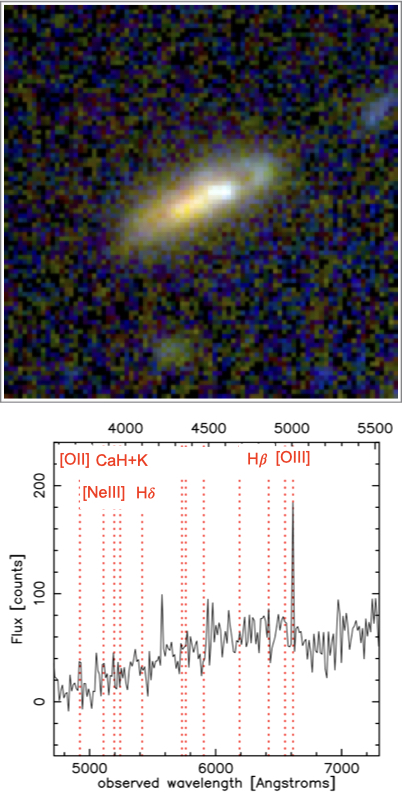
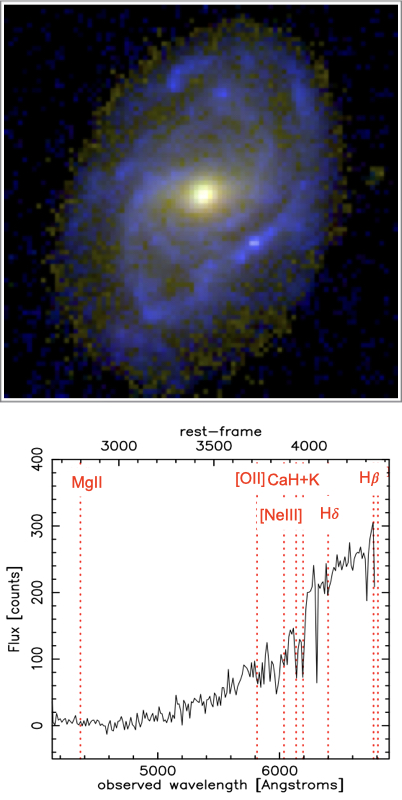
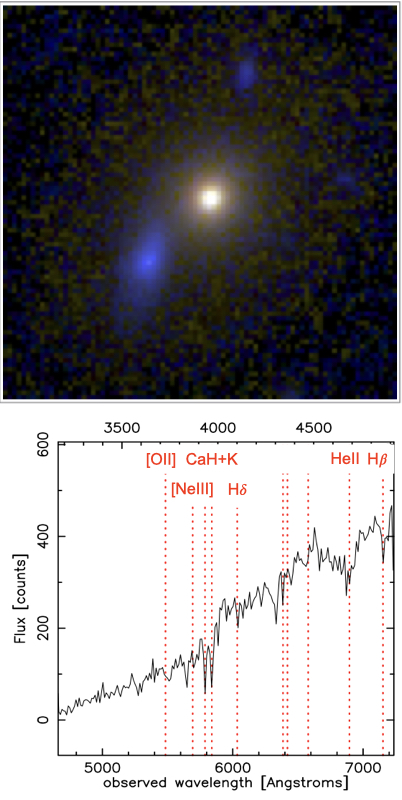
Active Galactic Nuclei: from the nucleus to the host
Active Galactic Nuclei (AGN) at the center of galaxies can affect their host galaxies through the so-called AGN feedback process. We use photometric and spectroscopic data to search for AGN-powered winds and investigate their impact on the host properties.
Through the analysis of ultraviolet and X-ray spectra of large samples of unobscured AGN we investigate their emitting nuclear components (namely the accretion disk and the hot corona), their interplay, and the possible use of high-redshift AGN as standard candles for cosmological studies.
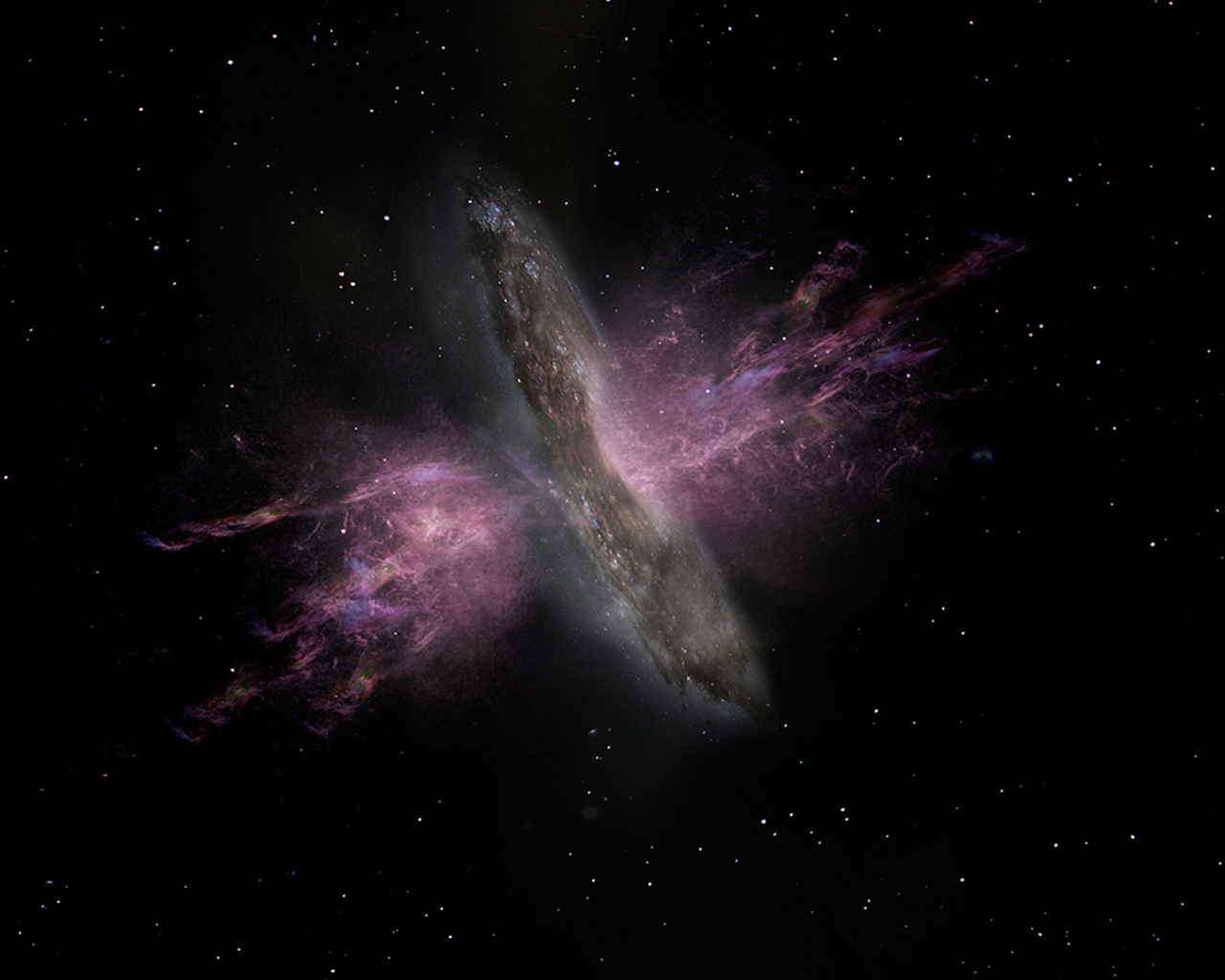
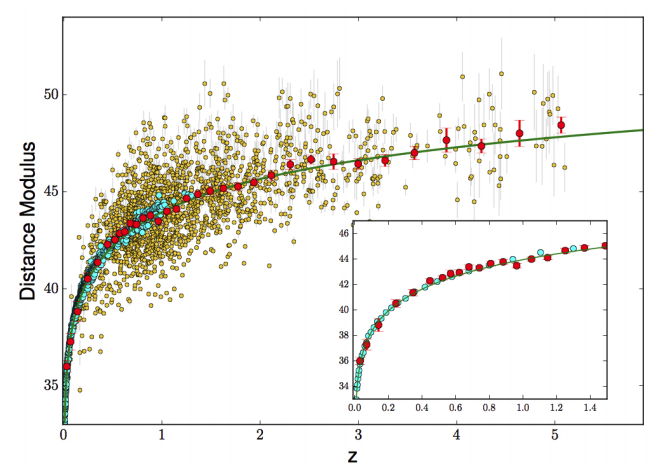
The role of the environment in shaping galaxy properties
Galaxies in overdense environments at early epochs undergo earlier and faster evolution than field galaxies and become the passive and massive galaxies that populate local galaxy clusters. To determine which processes intervene in their evolution and at which epochs, it is necessary to find galaxy overdensities, and identify and study their galaxy members. Since galaxy overdensities are extended and contain galaxies of different types, the identification and study of their members require spectroscopic and photometric data over large regions and across the whole multi-wavelength spectrum.
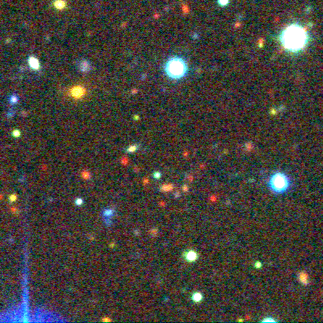
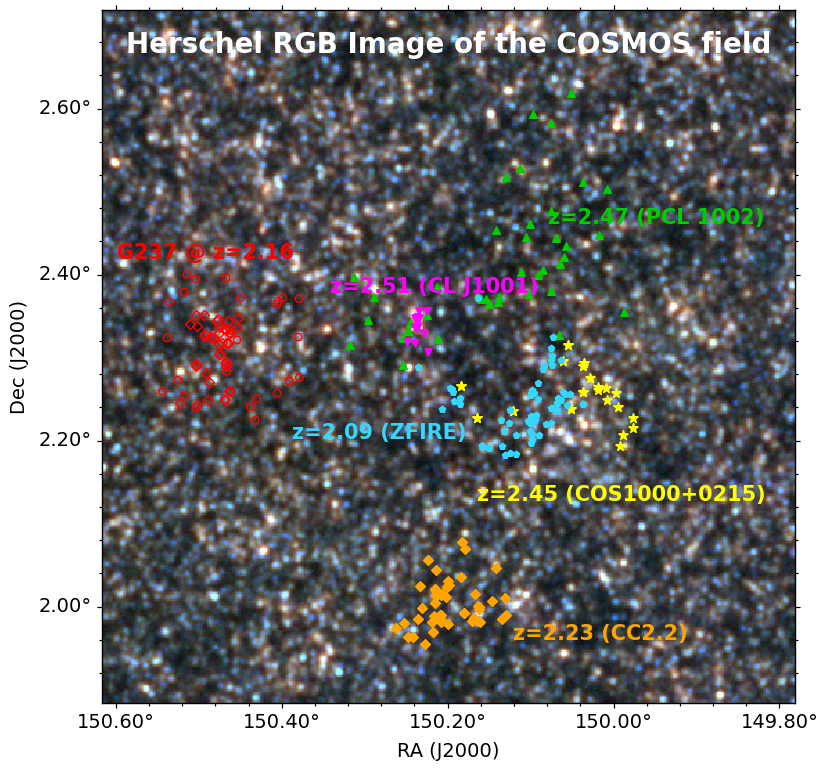
Our involvement within spectroscopic surveys includes also technological support and software development (see the Astronomical Software page):
- Observations preparation (Bottini et al. 2005)
- Data control and flow management (Garilli et al. 2012)
- Data reduction (Scodeggio et al. 2005, Zanichelli et al. 2005, Gargiulo et al. 2022)
- Redshift measurements (Garilli et al. 2010)
- Data releases (Scodeggio et al. 2018, Garilli et al. 2008, 2014, 2021)
A list of our most recent papers can be obtained from the ADS new query form
